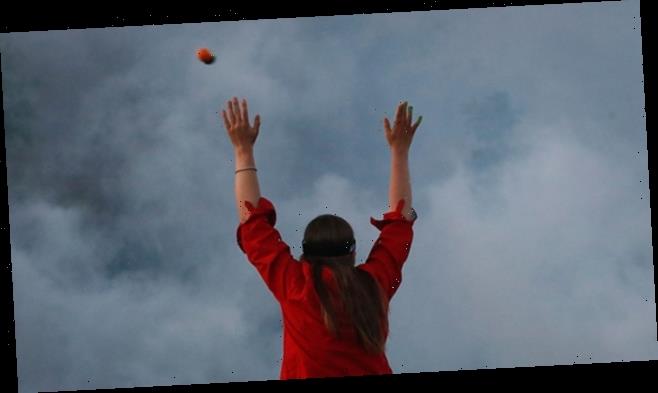Some teenagers are going to bear scars from the past three weeks’ protests for a lifetime. Actually, we should say, they’re going to bear the scars from police use of excessive force for a lifetime — because we hope that the experience of marching for racial justice has forever changed them in the best way possible. Meanwhile, incidents like the use of a Taser on 16-year-old Jahmel Leach of the Bronx have to be investigated, prosecuted, and stopped.
According to Leach’s family, the boy was an innocent bystander at a protest in the Bronx on June 1 just before 9 p.m., when police Tased him, causing him to fall to the ground, tearing a gash in his face and possibly damaging his teeth, the New York Times reports. Police said they saw him set fire to garbage when they arrested him, charging him with arson as a juvenile.
According to his cousin, Yamil Miller, Leach was brought to a hospital before his mother was notified — which is not the protocol for a minor.
“I’m sorry. He is so tall; I thought he was an adult when I took him down,” the police officer who shot him with the stun gun reportedly told his mother, Daisy Acevedo, as if being tall and Black is a crime on its own.
Miller also told the Daily News that the police wouldn’t let him dress in his clothes when the hospital discharged him, forcing him to go home in a hospital gown with no shoes on.
On Thursday, Mayor Bill de Blasio said that the New York Police Department, the Bronx District Attorney’s Office, and the Civilian Complaint Review Board were all investigating the arrest.
“He didn’t break the law at all,” Rev. Kevin McCall said, speaking on behalf of Leach and his family at a news conference on Thursday. “He was an innocent bystander, watching protesters, and he gets assaulted.”
Leach is one of several teenagers who have been tear-gassed, Tased, or hit with rubber bullets, pepper balls, or bean bag ammo during protests. In Austin, 16-year-old Brad Levi Ayala had to undergo brain surgery after police shot him in the forehead with a bean bag from a 12-gage shotgun in May. In Sacramento, sheriff’s deputies shot 18-year-old Dayshawn McHolder with a rubber bullet and he will now need jaw surgery, according to his family.
But many teenagers who have been demonstrating since the death of George Floyd have told reporters that they’re undeterred by the police violence they’ve witnessed.
“It was terrifying,” 17-year-old Aly Conyers told the Washington Post of being tear-gassed and shot at with rubber bullets by the National Guard on June 1 in Washington, D.C. “It was like something out of a movie scene. Everyone went moving backwards and crying.”
And yet she has returned to demonstrations day after day. She told the paper she decided to form a group with her brother and a friend called Faces of the Future to continue their activism after this wave of protests dies down.
“I stand here as a 17-year-old who won’t be able to vote in the next election, asking you … asking the people older than me to vote for me,” she told a crowd earlier this month. “Use my voice to use your voice to elect the right person who can protect us.”
Here is some expert guidance on how to raise your kids to be activists.
If anyone wants to argue about the value of protesting in changing things, direct them to these children’s books about American history.
Source: Read Full Article





